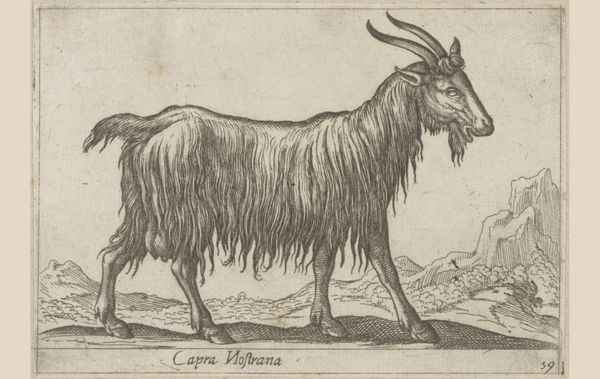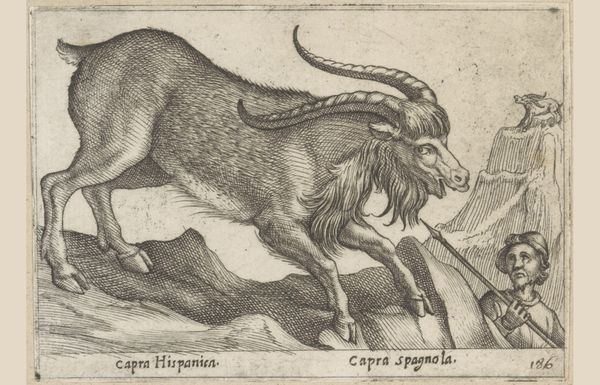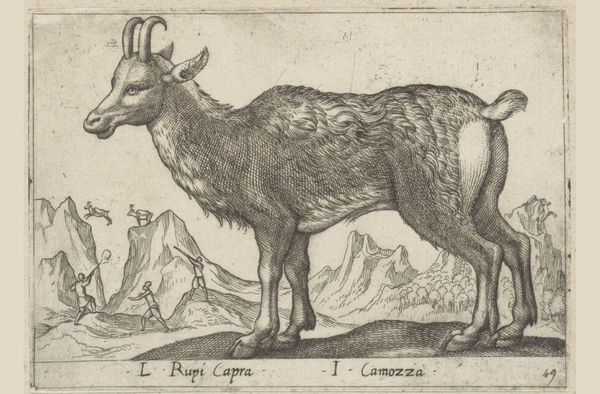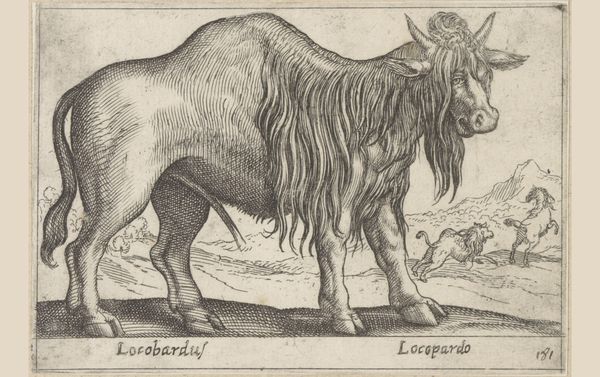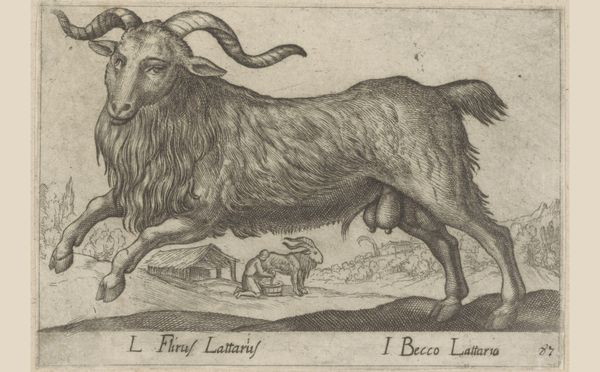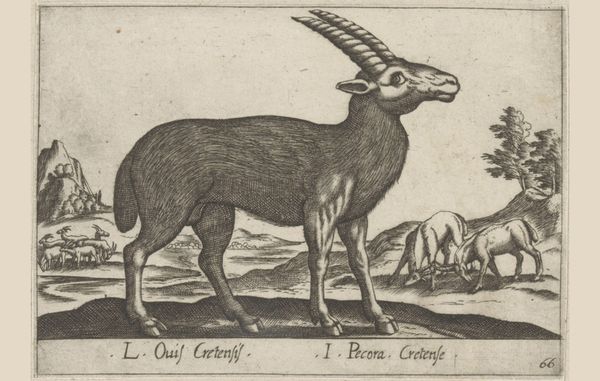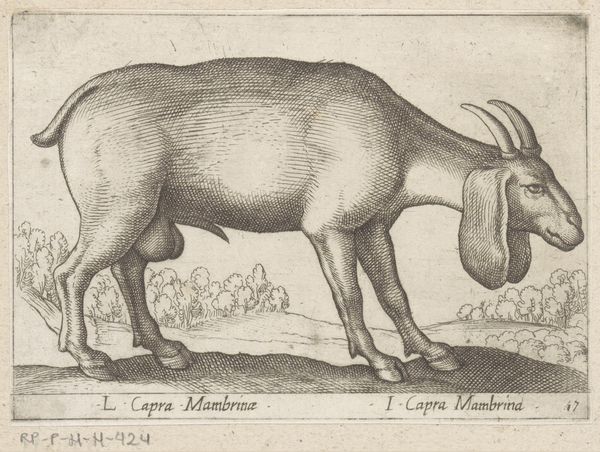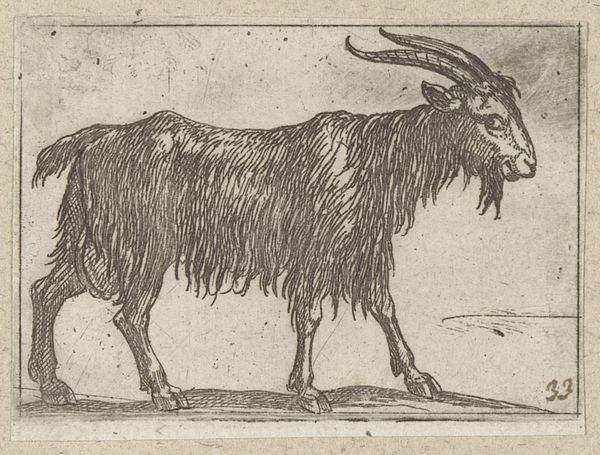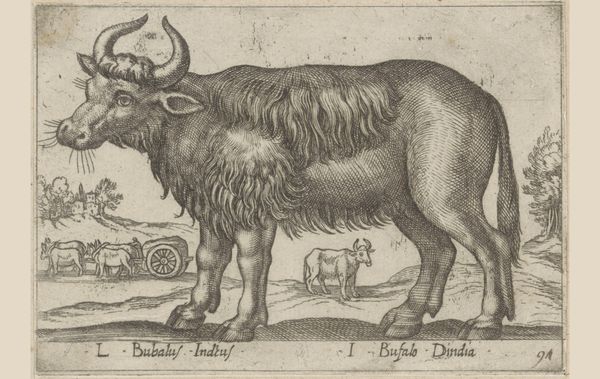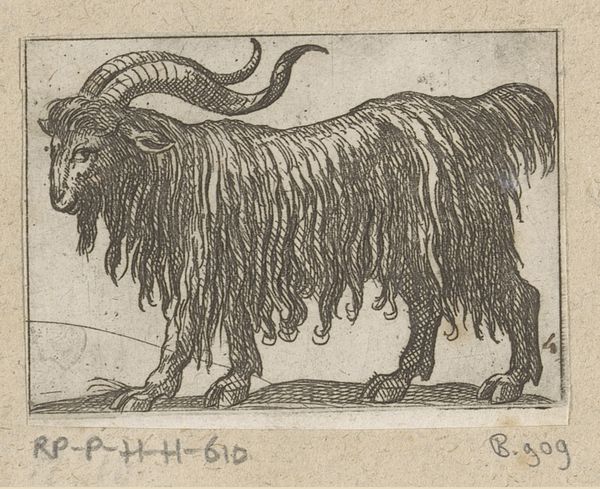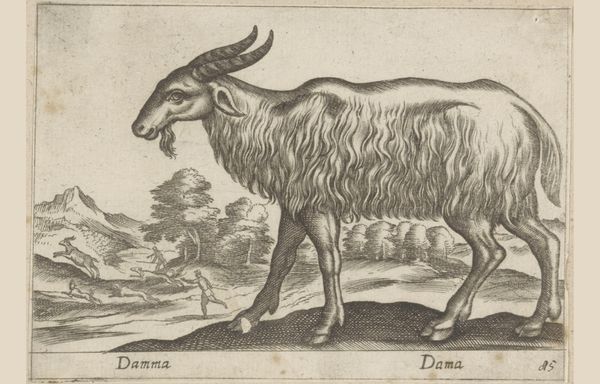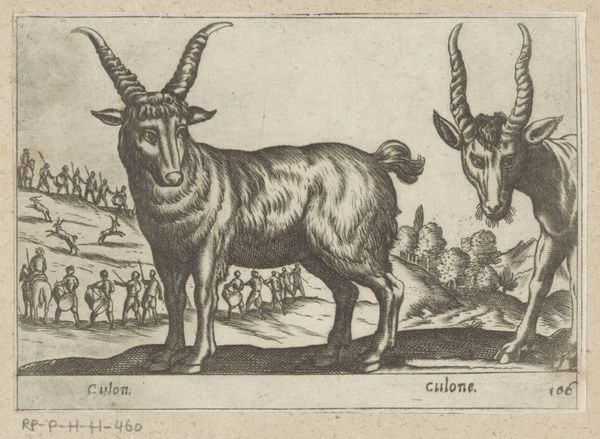
print, engraving
#
baroque
#
animal
# print
#
landscape
#
figuration
#
line
#
genre-painting
#
engraving
#
realism
Dimensions: height 95 mm, width 137 mm
Copyright: Rijks Museum: Open Domain
Curator: Immediately striking. I see the Baroque penchant for detail and texture, even in this modestly sized print. Editor: We're standing before "Libische geit", or "Libyan Goat", an engraving by Antonio Tempesta, dating from before 1650, now held here at the Rijksmuseum. Its rendering of this particular animal is quite… unique. Curator: The rendering *is* fascinating. Look at the texture of that shaggy coat – almost like flowing water, a river of hair. Is it intended to represent abundance, fertility perhaps, with the exaggerated udder? Editor: That's certainly one layer. Consider, though, the burgeoning field of natural history during this period. Thinkers were striving to categorize and understand the natural world. Perhaps Tempesta sought to create a scientifically accurate depiction. The text on the print labels this goat *Capra Libyca*. Curator: True, there's that objective element of documentation, of typological study. But the dramatic, almost theatrical lighting can’t be ignored, elevating the humble goat. The smaller goat in the background too; it reminds me of a family portrait, a dynasty perhaps, set against this backdrop. What is your view? Editor: I'm curious about the function of such an image. Prints circulated widely, making art accessible. Did this image adorn the walls of wealthy collectors, a display of their refined tastes? Or was it disseminated amongst a broader audience, sparking curiosity about exotic animals and faraway lands? We can never know for certain the context from a contemporary view. Curator: The ripple effect is immeasurable – art constantly changes meaning as cultural and socio-economic spheres develop, the context always influencing how art is presented and received. I wonder what these animal images signified to 17th-century minds in their time as society was going through the discovery age? Editor: It's a question of the ever-evolving dialogue between art, the public, and historical forces. A reminder that art isn't created in a vacuum. Curator: Precisely. "Libische geit," it is an example of a humble artwork encapsulating so much about a time through symbolic value, culture and knowledge. Editor: It provides insight to art history, while making it interesting in approach and discussion.
Comments
No comments
Be the first to comment and join the conversation on the ultimate creative platform.
